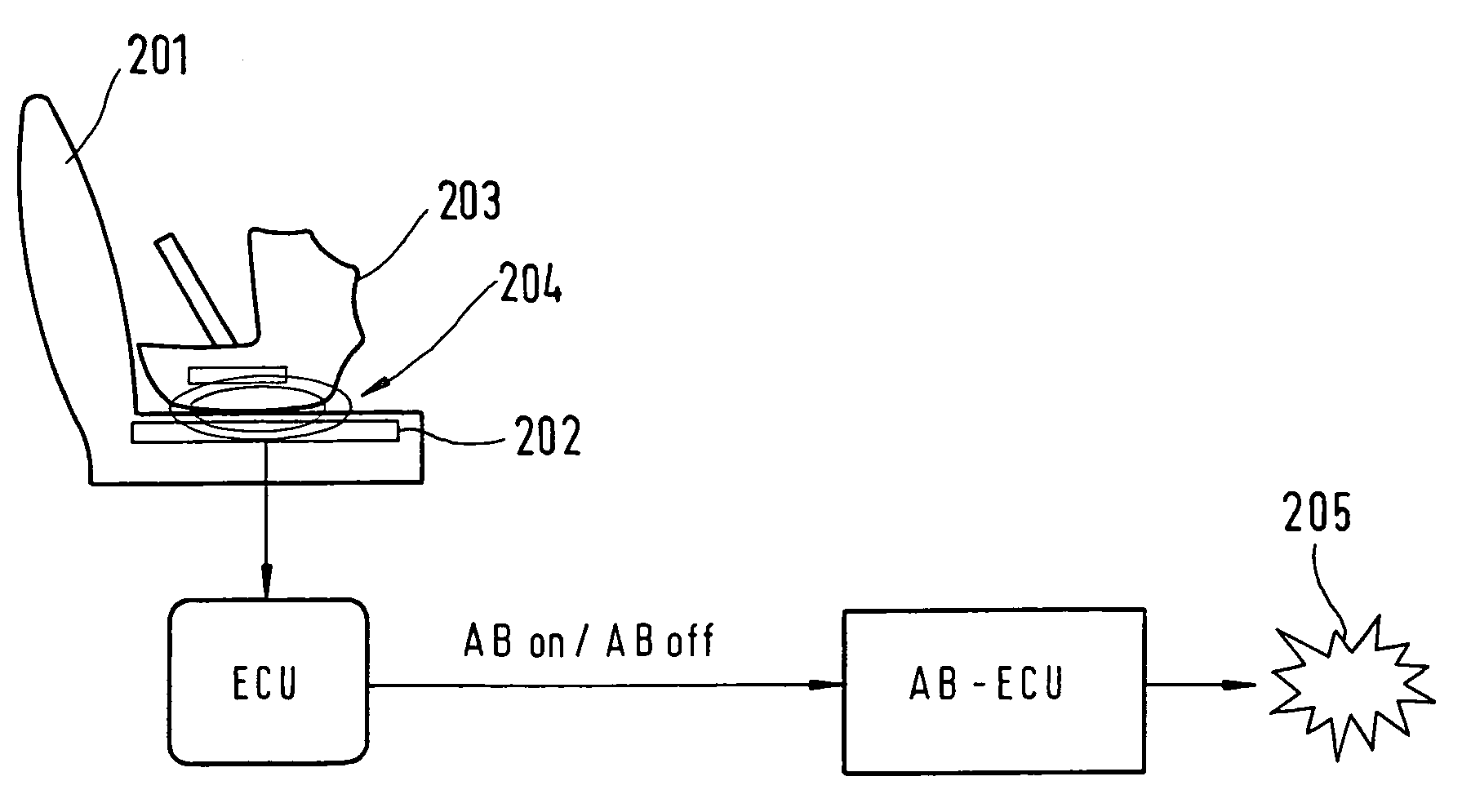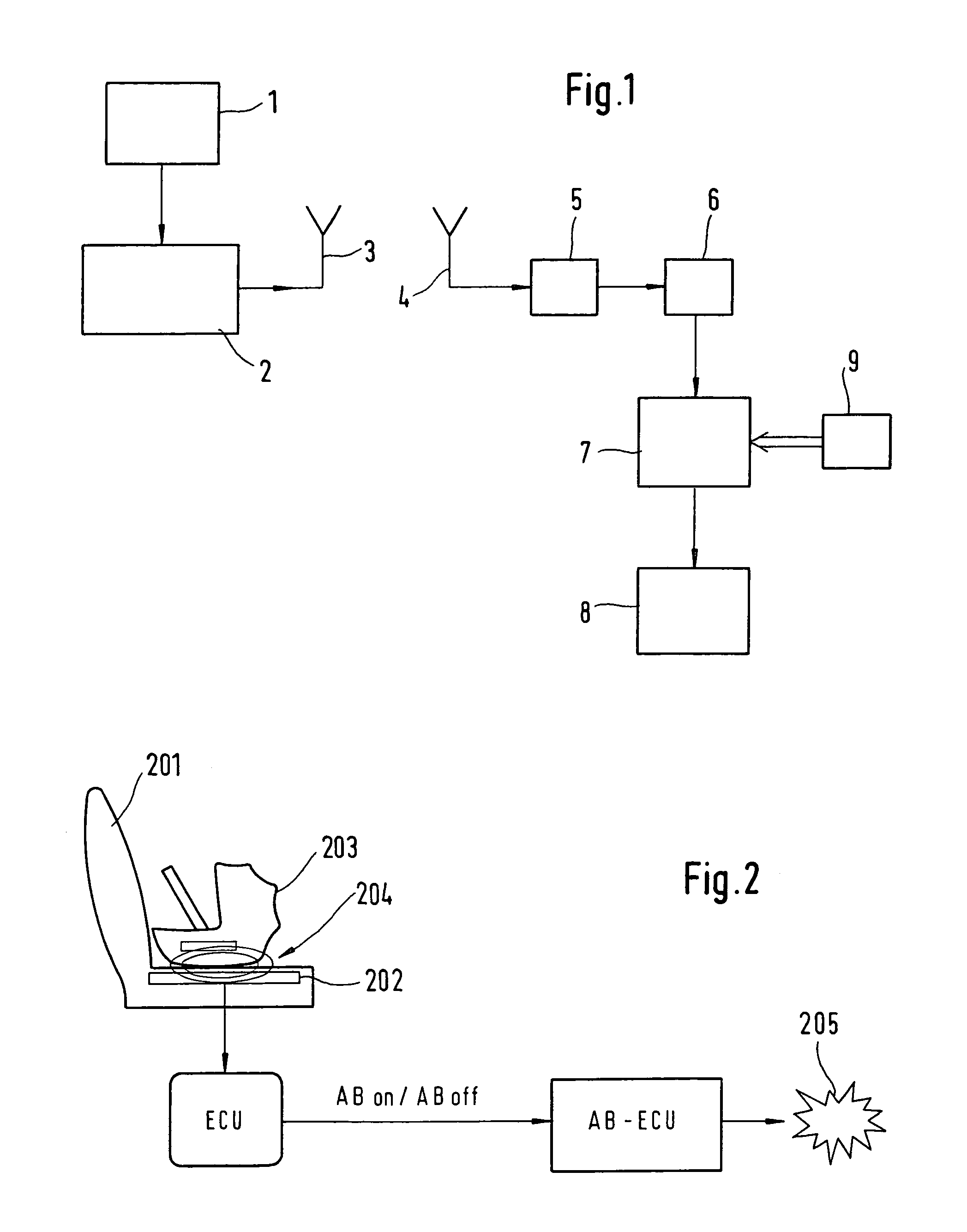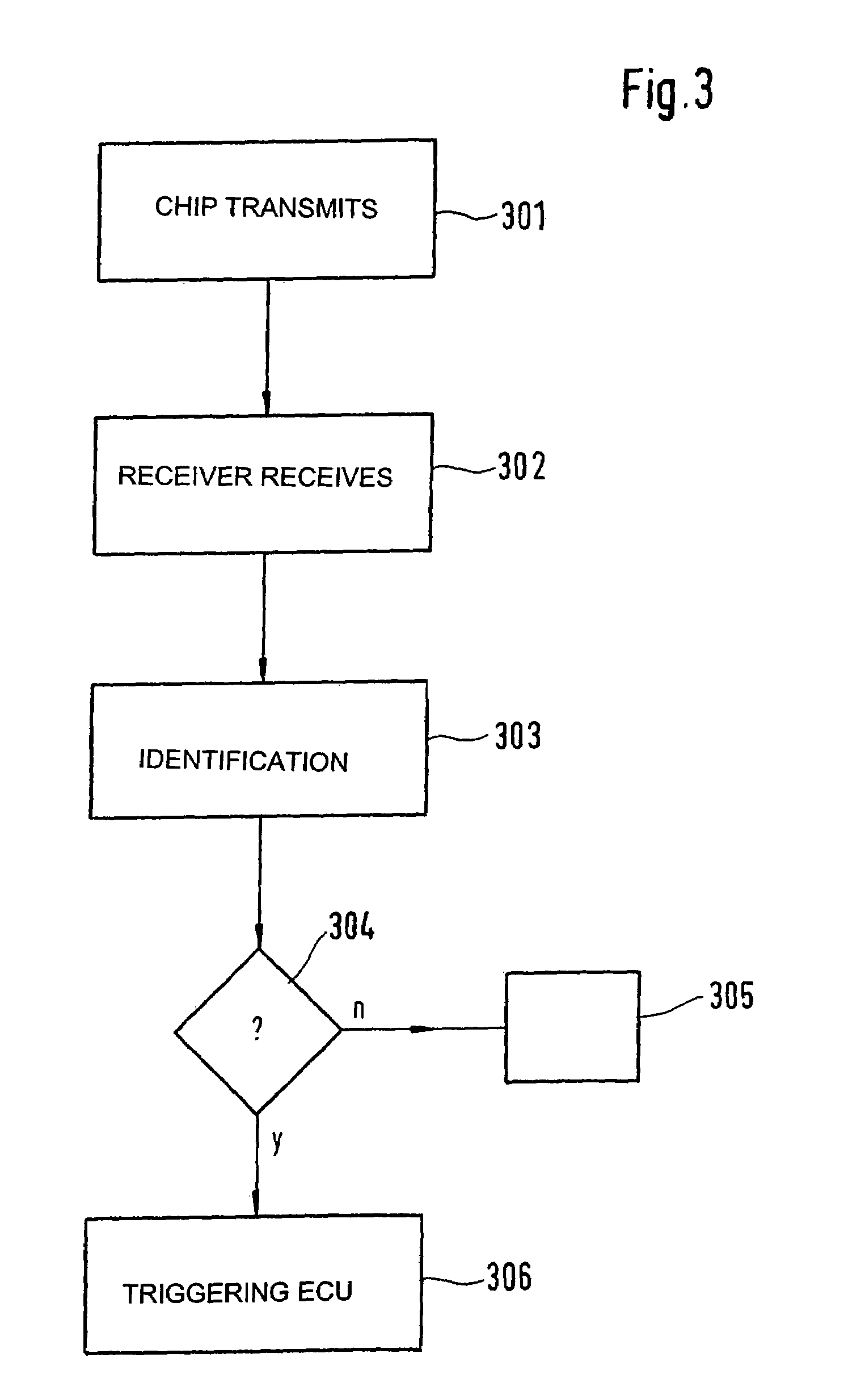Child seat and method for recognition of a child seat
a child seat and recognition method technology, applied in the field of child seats and methods for recognition of child seats, can solve the problems of not being attractive to children in child seats, and achieve the effect of increasing the reliability of child seat detection
- Summary
- Abstract
- Description
- Claims
- Application Information
AI Technical Summary
Benefits of technology
Problems solved by technology
Method used
Image
Examples
Embodiment Construction
[0010]Apart from a direct mass determination in order to identify a child seat on the passenger side, there is the possibility of equipping the child seat with a transponder system. The so-called OC (occupant classification) mat includes a transmitter and receiver antenna. The child seat has at least one or a plurality of transponder coils, which react to the signal transmitted by the OC mat and return a corresponding signal, partially in encoded form. Via the receiver antenna it is then analyzed whether a child seat is located on the seat. Furthermore, it is ascertained on the basis of an identification what type of child seat is involved and how it is positioned.
[0011]According to the present invention, another method for the contact-less or contact-free detection or identification of child seats will now be introduced. In this context a method and a child seat are to be provided, which may be realized without major changes in the child seat itself. This allows every child-seat ma...
PUM
 Login to View More
Login to View More Abstract
Description
Claims
Application Information
 Login to View More
Login to View More - R&D
- Intellectual Property
- Life Sciences
- Materials
- Tech Scout
- Unparalleled Data Quality
- Higher Quality Content
- 60% Fewer Hallucinations
Browse by: Latest US Patents, China's latest patents, Technical Efficacy Thesaurus, Application Domain, Technology Topic, Popular Technical Reports.
© 2025 PatSnap. All rights reserved.Legal|Privacy policy|Modern Slavery Act Transparency Statement|Sitemap|About US| Contact US: help@patsnap.com



